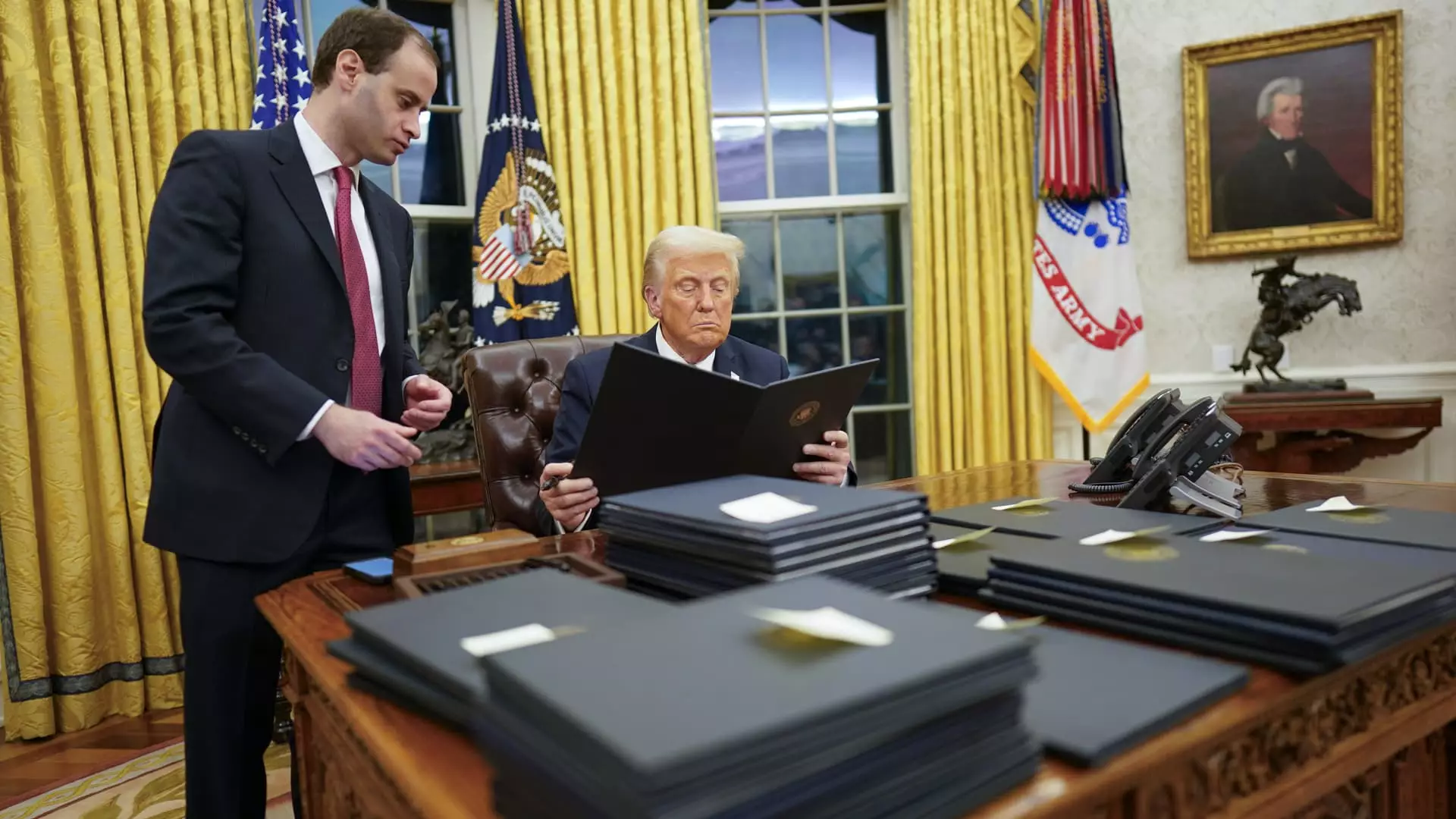The inauguration of President Donald Trump marked a significant pivot in the United States’ energy strategy, characterized by a rapid advancement towards fossil fuel production and a noticeable withdrawal from commitments to combat climate change. This shift has sparked discussions among industry leaders, policymakers, and environmental advocates, raising questions about the future landscape of energy production in the U.S.
As President Trump took office, he immediately acted on his promise to reopen access to various fossil fuel resources. In his initial hours, he signed multiple executive orders intended to stimulate fossil fuel production, dismissing the previous administration’s emphasis on transitioning to cleaner energy sources. This creates a clear divide in the approach to energy policy between the Trump administration and the administration of his predecessor, Joe Biden. While the U.S. had already established itself as a key player in the global energy market—being the leading oil and gas producer—Trump’s directives aimed to further entrench this position.
The energy market’s actual reaction to these orders, however, was met with skepticism. While Trump called for an aggressive push to “drill, baby, drill,” CEOs of major oil companies like ExxonMobil and Chevron indicated that their production strategies remain primarily driven by market conditions, casting doubt on the tangible impact of the government’s attempts to influence private sector activities.
Following the directives to boost fossil fuels, Trump declared a national energy emergency, claiming that the U.S. faces a dangerously unstable energy supply. He justified this emergency declaration by highlighting potential electricity demand spikes anticipated from rising technologies such as artificial intelligence and domestic manufacturing initiatives. This concern was echoed by PJM Interconnection, the largest power grid operator in the U.S., which warned of potential electricity shortfalls stemming from the quicker shutdown of coal plants than the installation of replacement capacity.
In light of this, the administration urged federal agencies to utilize emergency powers to accelerate the production and distribution of domestic energy sources. Such measures underscore a broader intention to fortify the U.S. energy grid and address perceived vulnerabilities, indicating an underlying belief that fossil fuels are essential for ensuring reliable energy availability.
The Trump administration’s approach also included an intent to rescind participation in international climate agreements, most notably the Paris Agreement. By initiating the withdrawal process, the administration signaled a departure from coordinated global efforts to limit temperature rise and address climate change. The president’s directives outlined a vision where fossil fuels would become the centerpiece of U.S. energy policy, a sharp contrast to the previous goals of reducing emissions and promoting electric vehicles.
In addition to rescinding the Paris commitments, Trump rolled back the Biden administration’s aspirations, which included targets for electric vehicle sales and the carbon neutrality of the electricity grid. This shift illustrates a comprehensive retreat from a proactive climate policy in favor of regressive support for fossil fuel endeavors.
Despite the president’s aggressive approach to roll back environmental protections, many of his executive actions are anticipated to face significant legal challenges. Previous attempts to dismantle protective measures around coastal waters faced judicial pushback, casting doubt on the legitimacy of some newly introduced orders. Additionally, litigation concerning drilling bans in certain marine environments harkens back to similar attempts made during Trump’s first term, indicating that legal hurdles are likely to persist.
The administration’s commitment to maximizing resource production in Alaska, particularly in liquefied natural gas (LNG) sectors, also poses regulatory complexities. The initiatives proposed to expedite project approvals in Alaska clash with environmental concerns and the standards set by previous administrations.
In his push to elevate fossil fuels, Trump also took a stance against renewable energy projects, halting new leases for wind energy initiatives. This indicates a targeted effort to side-line an industry that many view as essential to achieving long-term sustainability goals. By pausing funding for electric vehicle infrastructure and considering cuts to subsidies, there lies a significant shift in priorities that could hinder the momentum gained by the clean energy sector.
As the energy conversations evolve, the long-term implications of the Trump administration’s policies will become clearer. The trade-offs between fossil fuel reliance and sustainable energy sources will continue to shape America’s energy dialogue, leaving stakeholders to navigate an increasingly polarized landscape. The repercussions of these decisions will resonate throughout the industry and among environmental advocates, underscoring an urgent need for discourse around energy future regardless of political climates.

Leave a Reply